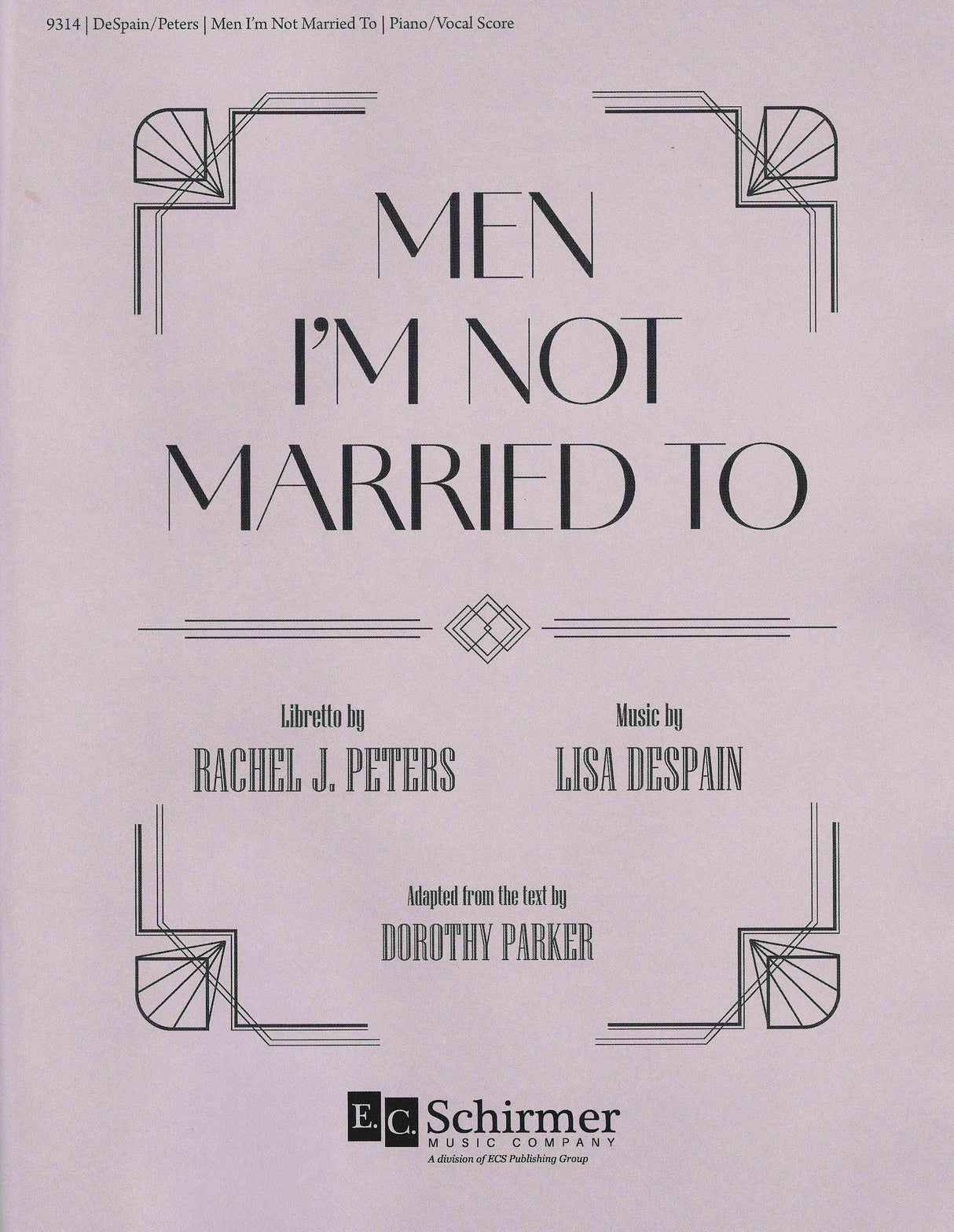Despain: Men I'm Not Married To
Expected to ship in 1-2 weeks.
- Composer: Lisa DeSpain (1964-)
- Librettist: Rachel J. Peters (1977-)
- Author: Dorothy Parker (1893-1967)
- Format: Vocal Score
- Instrumentation: Opera
- Work: Men I'm Not Married To
- Work Language: English
- UPC:
- Size: 8.5 x 7.1 inches
Description
Dorothy Parker, notorious for her biting satire and ferocious wit in poetry and prose, conceived Men I'm Not Married To as a companion piece to Franklin Pierce Adams' Women I'm Not Married To, in which a man struggles to understand why so many eligible women snub such a great catch as him! Though 1920s flappers remain scantily clad in the American popular imagination, women customarily wore many layers of undergarments until well into the decade; they simply removed them for greater comfort during social gatherings. Lisa DeSpain and Rachel Peters have expanded Parker's original text from the perspective of one woman to three bridesmaids stuck in matching unfortunate outfits and circumstances. Our Frances, Mildred, and Evelyn cast off their underpinnings, taken aback by the reality of their newfound freedom.
Synopsis:
In the summer of 1924, Frances, Mildred, and Evelyn are three young bridesmaids in the powder room at the wedding reception of their mutual friend, Wilhelmina. They are hiding from their respective assigned groomsmen: a prankster whose antics have run afoul; a sanctimonious judge obsessed with Prohibition contraband; and a self-proclaimed intellectual full of unsolicited advice. Thank goodness it's the era of the New Woman, when dating has supplanted courtship and a woman's worth will never again be tied to her marital prospects. Right?
Publishers use a lot of words to describe what they sell, and we know it can be confusing. We've tried to be as clear as possible to make sure you get exactly what you are looking for. Below are descriptions of the terms that we use to describe the various formats that music often comes in.
Choral Score
A score for vocalists that only contains the vocal lines. The instrumental parts are not there for reference. Generally, cheaper than a vocal score and requires multiple copies for purchase.
Facsimile
Reproductions of the original hand-written scores from the composer.
Full Score
For ensemble music, this indicates that the edition contains all parts on a single system (there are not separate parts for each player). In larger ensembles, this is for the conductor.
Hardcover
Hardbound. Generally either linen-covered or half-leather.
Orchestral Parts
Similar to a wind set, this is a collection of parts. In the case of strings, the numbers listed are the number of copies included, though generally these are available individually (often with minimum quantities required).
Paperback
When publishers offer multiple bindings (e.g. hardcover) or study scores, this is the "standard" version. If you're planning to play the music, this is probably what you want.
Performance / Playing Score
A score of the music containing all parts on one system, intended for players to share. There are not separate parts for each player.
Set of Parts
For ensemble music, this indicates that there are separate individual parts for each player.
Solo Part with Piano Reduction
For solo pieces with orchestra, this is a version that contains a piano reduction of the orchestra parts. For piano pieces, two copies are typically needed for performance.
Study Score
A small (think choral size) copy of the complete score meant for studying, and not playing. They make great add-ons when learning concertos and small chamber works.
Vocal Score
A score prepared for vocalists that includes the piano/organ part or a reduction of the instrumental parts.
Wind Set
For orchestral music, this is a collection of wind and percussion parts. The specific quantities of each instrument are notated.
With Audio
In addition to the printed music, the edition contains recordings of the pieces. This may be an included CD, or access to files on the internet.
With / Without Fingering (Markings)
Some publishers prepare two copies - a pure Urtext edition that includes no fingering (or bowing) suggestions and a lightly edited version that includes a minimal number of editorial markings.


